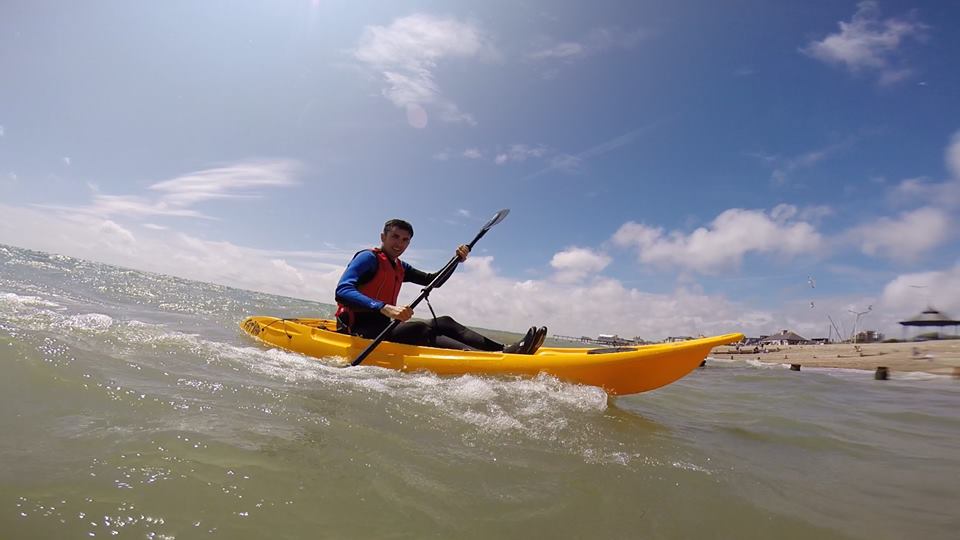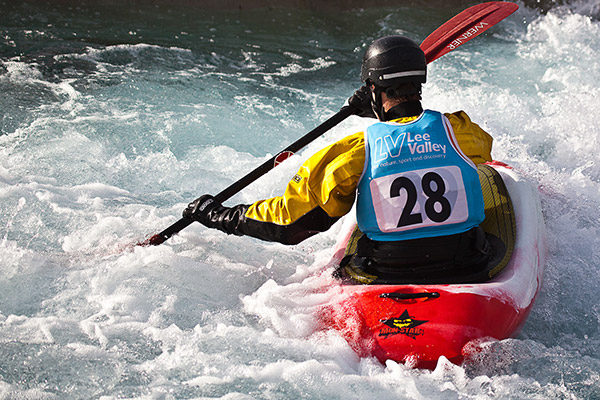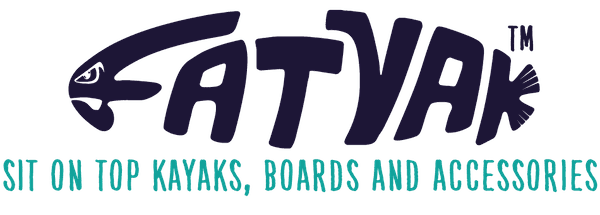How to Paddle a Kayak
Got your first kayak but not sure how to paddle efficiently? Or maybe you have tried but your technique is making your arms and shoulders ache a lot? Learn how to paddle a kayak efficiently from our team of experts here at Fatyak!
Posture & Position
Sit up straight, open your chest for ease and efficiency of breathing and relax your shoulders. Try not to slump against the backrest.
In a sit on top you have more room for your lower body and our kayaks have foot rests to suit different leg lengths, so place your feet in a position that feels most comfortable for you.
We would recommend having a slight bend in your legs, with your knees pointing out to the sides of the kayak for more balance.

A relaxed paddler in one of our Kaafu kayaks. Note how his knees are slightly bent with good posture. Also the grip of the paddle is not especially wide – only a bit more than shoulder width apart.
Holding the Paddle Correctly
- Firstly make sure you are holding the paddle the right way round – the concave sides of the blade should be facing backwards.
- Now make sure you are holding the paddle the right way up – most blades will have a cut out at the bottom of each blade (meaning the top of the blade is slightly longer than the bottom) and usually there will be a sticker either on the blade or on the shaft to guide you.
- Your arms should be a bit more than shoulder width apart.
Your Grip
If you are right handed, you should hold the paddle firmly with your right “control” hand and allow your left hand to rotate around the shaft. Your control hand shouldn’t change position.
The Beginning of the Stroke
Remember that your torso and legs should be doing most of the work with your shoulders and arms only there to transmit power. It is really helpful to learn the principle by keeping your arms completely straight, whilst rotating your torso to move you forward.
At the start of your stroke, twist your upper body so that you place the blade in the water up by your feet and close to the kayak’s waterline. Press your stroke-side foot firmly against the footrest for support, and continue this pressure throughout the stroke. Keep your lower arm almost straight, and relax your upper arm.

Note how the paddler above is using his torso to place the paddle in the right place, rather than straightening his arms. Using your torso correctly will save your arms from getting tired quickly. Copyright Lee Valley White Water Centre.
The Middle of the stroke
Once the blade is in the water, imagine your are pulling yourself up to and past the paddle.
Try to generate more power at the beginning of the stroke, less at the end. This will keep you from getting tired too quickly as you use your stronger torso muscles rather than your arms and shoulders.
The End of the Stroke
End the stroke when your lower hand is about level with your your belly. Going further back might feel natural but actually it is unnecessary and tiring.
After the stroke, move the blade out of the water to back and away from the kayak. Lift the blade out of the water by leading with the elbow. and allowing the wrist to follow. Let your upper arm follow the rotation of your torso, and don’t lift the blade too high – this will also tire your shoulders out fast!
Common Mistakes:
– poor posture
– rocking the kayak from side to side with abrupt weight shifts
– insufficient torso rotation
– ending the stroke too late and too far behind the hip
– pushing the upper hand too forward, creating a less effective blade angle
– straining the wrists by allowing them to bend
We hope this has helped you learn how to paddle a kayak. Got anything to add? Leave a message in the comments section below!
Happy kayaking!
Related articles: Why Choose a Sit on Top?, Choosing a kayak, Caring for your Fatyak, Transporting your Fatyak, Fatyak Stability… or look under our top menu to see all our paddling advice and product information.

